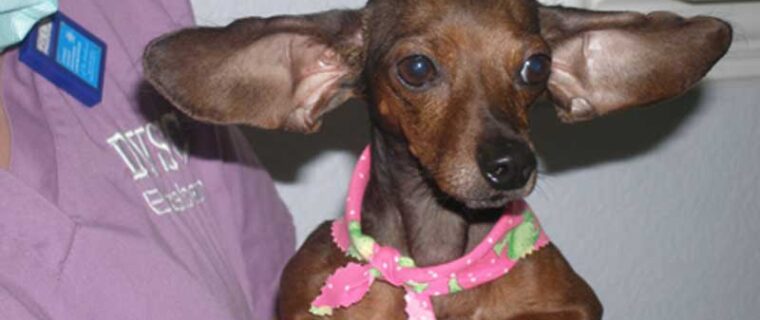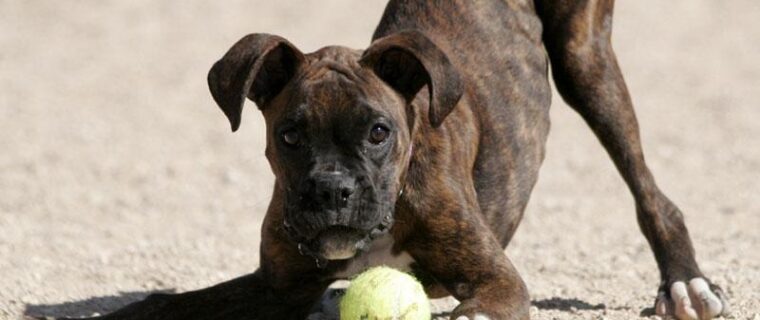Yearly Archives: 2016
Home » 2016
Cystotomy and Scrotal Urethrostomy
Cystic calculi, also called bladder stones or uroliths, are commonly seen in both dogs and cats. There are four predominant types of bladder stones: struvite, calcium oxalate, purine, and urate. Between 5-15% of bladder stones are mixed composition. Treatment options and risk factors depend on the type of stone present, therefore each bladder stone is […]
Read MoreUrethral Prolapse
- Nov, 22, 2016
- DVSC
- Medical Library
- Comments Off on Urethral Prolapse
Urethral Prolapse Urethral prolapse is defined as the extrusion of the urethral mucosa through the external urethral orifice of the penis. This condition occurs most commonly in young male dogs that have not been neutered. Brachycephalic breeds (e.g., bulldogs, Boston terriers, pugs) and Yorkshire terriers may be predisposed to urethral prolapse. Although we don’t know […]
Read More25+ Years of Neurosurgery at the DVSC
- May, 27, 2016
- DVSC
- Medical Library
- Comments Off on 25+ Years of Neurosurgery at the DVSC
The Dallas Veterinary Surgery Center (DVSC) was initially founded in 1986, principally as a neurosurgical referral practice, with greater than 50% of the total case load being neurosurgical. Throughout the years we have always strived to be on the “cutting-edge” of neurosurgical techniques and diagnostic procedures. Our surgeons have been involved with the development and […]
Read MoreThe Facts About Backs (IVDD)
- May, 22, 2016
- DVSC
- Medical Library
- Comments Off on The Facts About Backs (IVDD)
Intervertebral disc disease (IVDD) is a very serious and common disease seen in thousands of dogs every year. IVDD most frequently affects chondrodystrophic dogs—those characterized by having short legs and long backs, like the Dachshund and Bassett hound for example. However, IV disc herniation can occur in any breed—even in cats. Anatomy and disease process […]
Read MorePreventing Disc Disease in Your Dog
- May, 21, 2016
- DVSC
- Medical Library
- Comments Off on Preventing Disc Disease in Your Dog
Percutaneous Laser DiscAblation (PLDA) is a minimally invasive preventative procedure for degenerative disc disease in dogs. This procedure was developed by Dr. Kenneth E. Bartels at Oklahoma State University. Over 350 dogs have undergone percutaneous disc ablation since the procedure was clinically introduced in 1993. PLDA is recommended as a preventative procedureto reduce the risk of […]
Read MoreAnal Sac Adenocarcinoma
- Apr, 26, 2016
- DVSC
- Medical Library
- Comments Off on Anal Sac Adenocarcinoma
Dogs have two anal sacs (glands) beneath the skin which are located at the four and eight o’clock positions of the anus. (Figure 1) The anal sac duct opens into the edge of the anus. The anal sacs and ducts are closely associated with the anal sphincter muscle. When the anal sacs are expressed, fluid […]
Read MoreAnal Sac Removal, Elective
- Apr, 25, 2016
- DVSC
- Medical Library
- Comments Off on Anal Sac Removal, Elective
Anatomy: Dogs have two anal sacs (glands) beneath the skin which are located at the four and eight o’clock positions of the anus. (Figure 1) The anal sac duct opens into the edge of the anus. The anal sacs and ducts are closely associated with the anal sphincter muscle. When the anal sacs are […]
Read MoreArthritis
- Apr, 24, 2016
- DVSC
- Medical Library
- Comments Off on Arthritis
Arthitis is defined as inflammation of one or more synovial joints, usually accompanied by pain, swelling, and stiffness. Causes of arthritis are joint instability, trauma, degenerative changes (osteoarthritis), infection (bacterial or fungal arthritis), metabolic disturbances, or immune mediated disease (rheumatoid arthritis). Osteoarthritis caused by joint or ligament injury is most common in dogs and cats. […]
Read MoreArthroscopy
- Apr, 23, 2016
- DVSC
- Medical Library
- Comments Off on Arthroscopy
Arthroscopy is for both the diagnosis and treatment of a variety joint diseases. Arthro- is derived from the greek word for joint while –scope (“skopein”) is a greek word meaning an instrument for viewing. There are multiple advantages of arthroscopy over open arthrotomy with a traditional incision. Arthroscopy is minimally invasive and allows better visualization of […]
Read MoreAtlanto-axial (A-A) instability
- Apr, 22, 2016
- DVSC
- Medical Library
- Comments Off on Atlanto-axial (A-A) instability
Atlanto-axial (A-A) instability is generally seen in juvenile toy breeds due to congenital malformation or absence of the dens and/or associated ligamentous structures. A-A instability is occasionally seen in other breeds due to trauma. Patients will often present with neck pain, weakness and occasionally paralysis. Surgical stabilization of the A-A articulation is the treatment of […]
Read MoreSearch This Site
Medical Library Posts
- 25+ Years of Neurosurgery at the DVSC
- Anal Sac Adenocarcinoma
- Anal Sac Removal, Elective
- Arthritis
- Arthroscopy
- Atlanto-axial (A-A) instability
- Coxofemoral (Hip) Luxation
- Cranial Cruciate Ligament (CCL) Overview
- Cranial Cruciate Ligament (CCL) – Extracapsular Repair
- Cranial Cruciate Ligament (CCL) – Tibial Plateau Leveling Osteotomy (TPLO)
- Cranial Cruciate Ligament (CCL)-Tibial Tuberosity Advancement (TTA)
- Cutaneous Mast Cell Tumors
- Cystotomy and Scrotal Urethrostomy
- Degenerative Myelopathy
- Diaphragmatic Hernia
- Diskospondylitis
- Ear Canal Ablation and Bulla Osteotomy
- Elbow Dysplasia
- Epidural Analgesia
- Episioplasty
- Feline Perineal Urethrostomy
- Femoral Head Ostectomy (FHO)
- Fibrocartilaginous Embolism (FCE)
- Fibrocartilaginous Embolus in Schnauzers
- Fracture Healing by Biologic Osteosynthesis
- Fracture of the Radius and Ulna in Small breed dogs
- Fracture Repair by Circular External Skeletal Fixator (ESF)
- Gastric Dilatation-Volvulus (Bloat)
- Gastrointestinal Foreign Body
- Gastropexy, Elective
- Hip Dysplasia (Overview)
- Hip (Coxofemoral) Luxation
- Incontinence: Urethral Sphincter Mechanism Incompetence
- The Facts About Backs (IVDD)
- Intervertebral Disc Disease (IVDD) Percutaneous Laser Disc Ablation LDA
- Intervertebral Disc Disease (IVDD)- Care of a Paralyzed Pet
- Laryngeal Paralysis
- Lumbosacral Disease
- Mandibulectomy and Maxillectomy
- Medial Patellar Luxation (MPL)
- Microvascular Dysplasia Mimics Portosystemic Shunt
- Minimally Invasive Surgery in Soft Tissue Applications
- Neurosurgical Postoperative Physical Therapy
- Perianal Fistula Management in Dogs
- Perineal Hernias
- Peritoneopercardial Hernias in Dogs and Cats
- Portosystemic Shunts
- Sialocele (Salivary Mucocele)
- Spinal Fractures and Subluxations
- Splenectomy
- Total Hip Replacement
- Tracheal Collapse
- Triple Pelvic Osteotomy (TPO)
- Underwater Treadmill
- Updates in Fracture Management
- Urethral Prolapse
- Wobblers Disease










